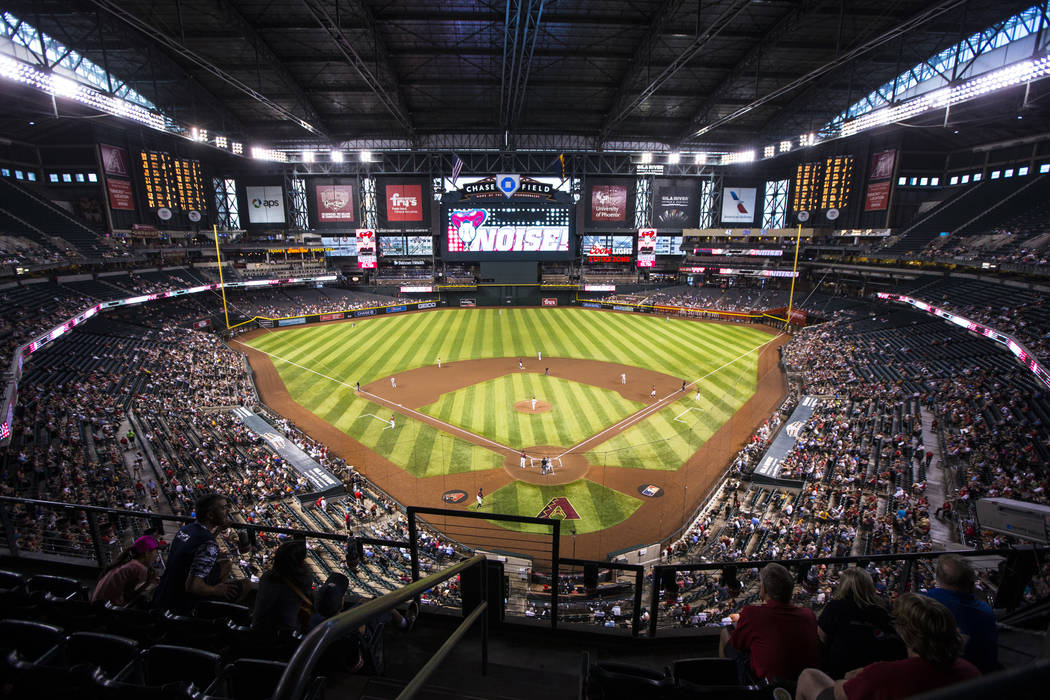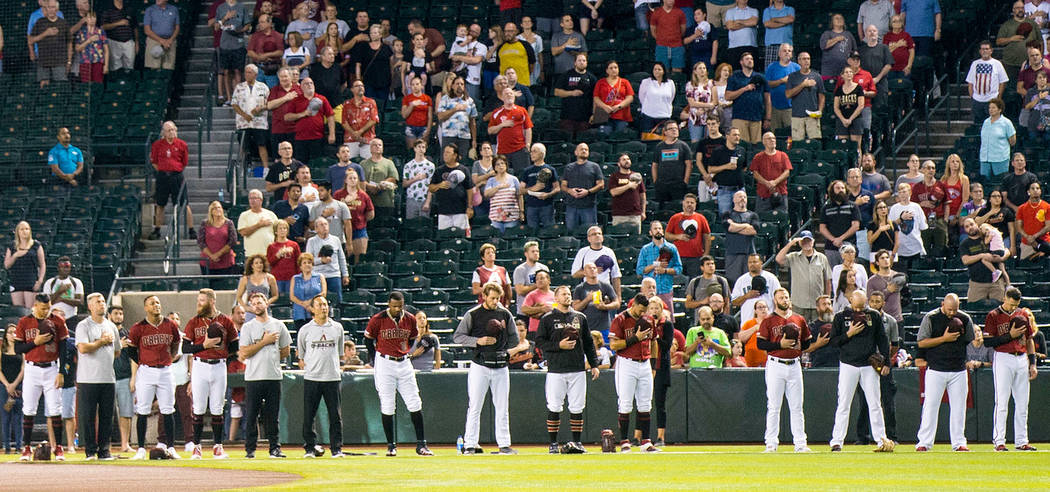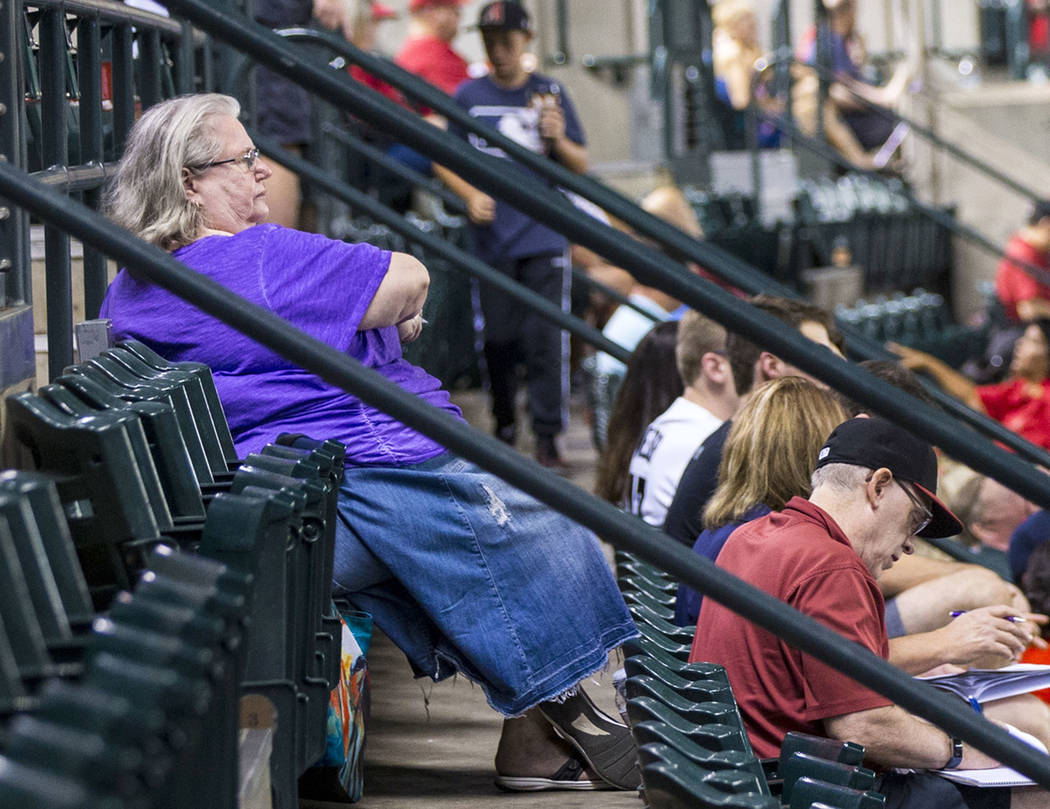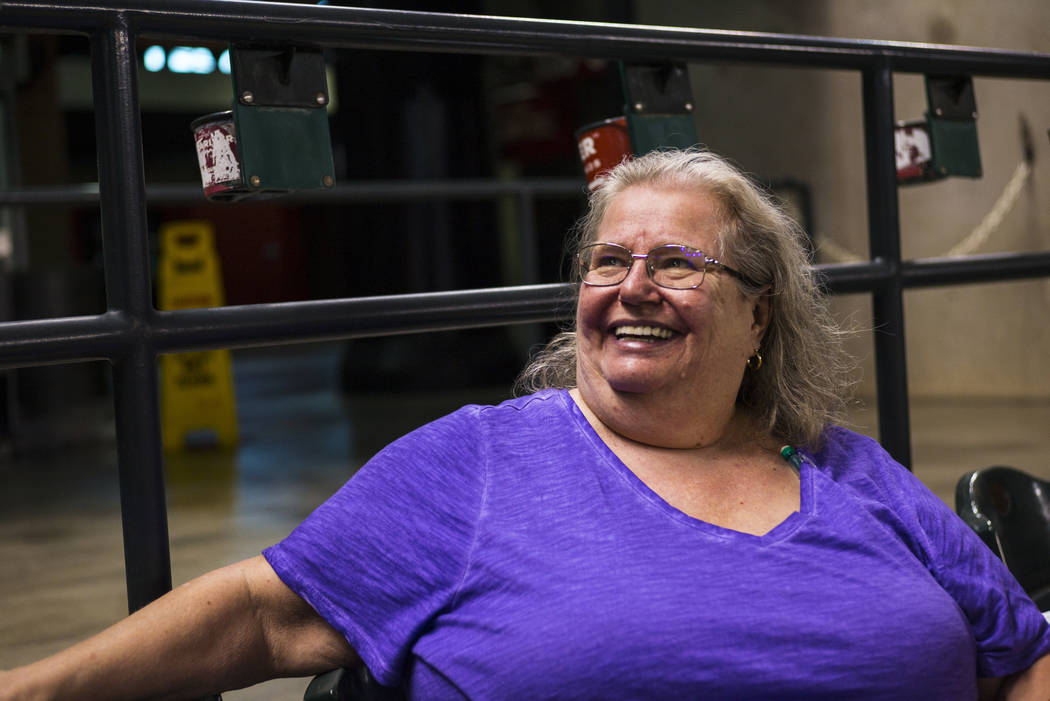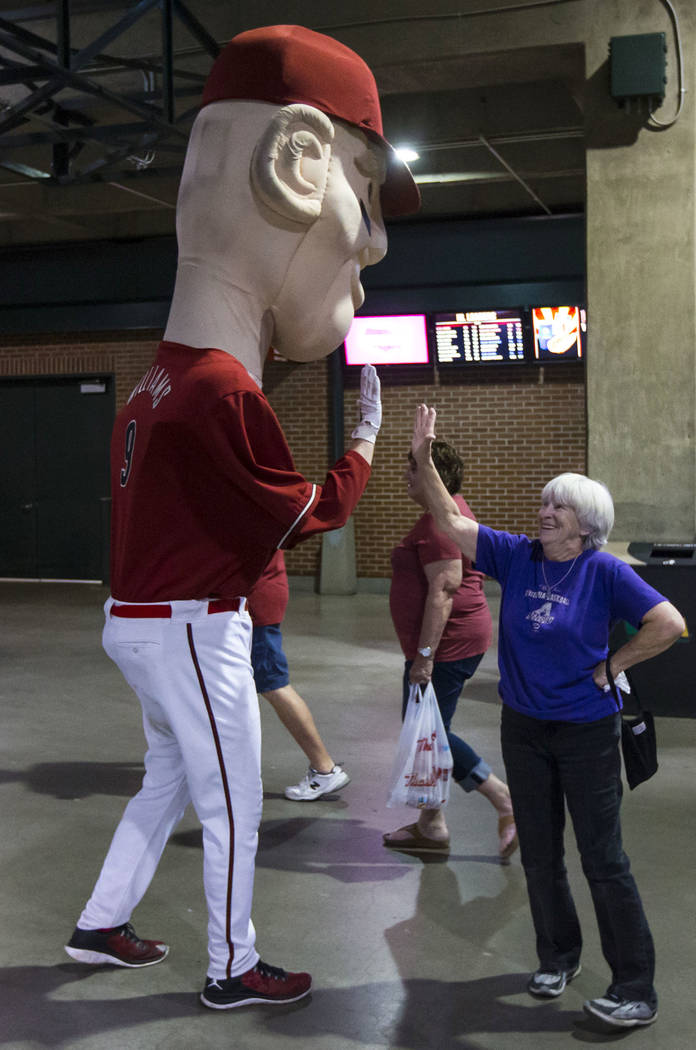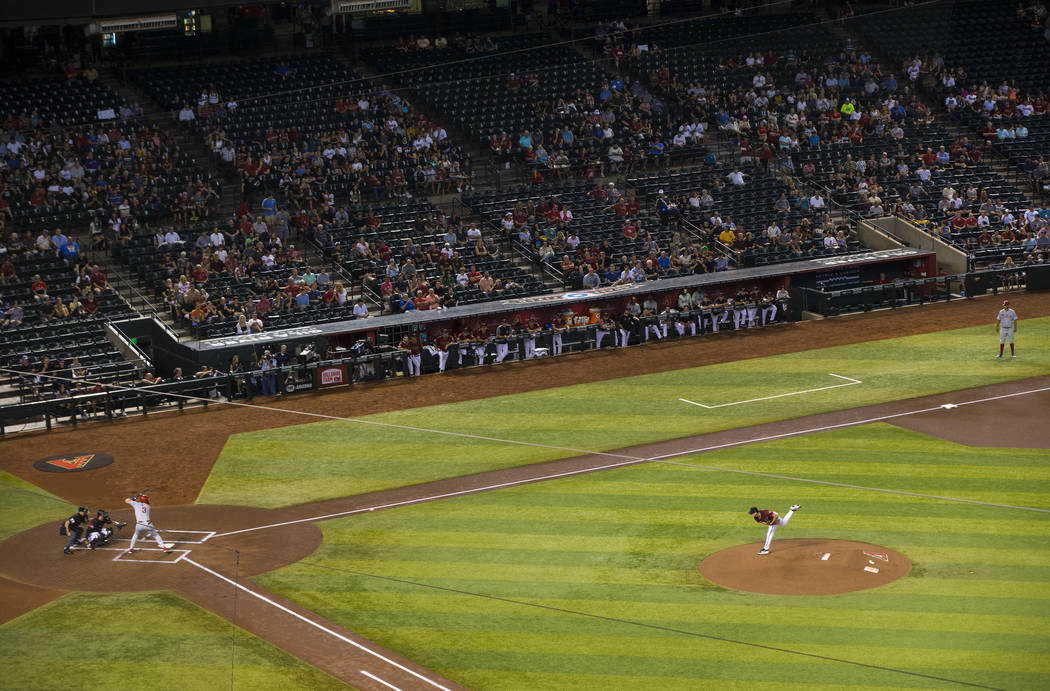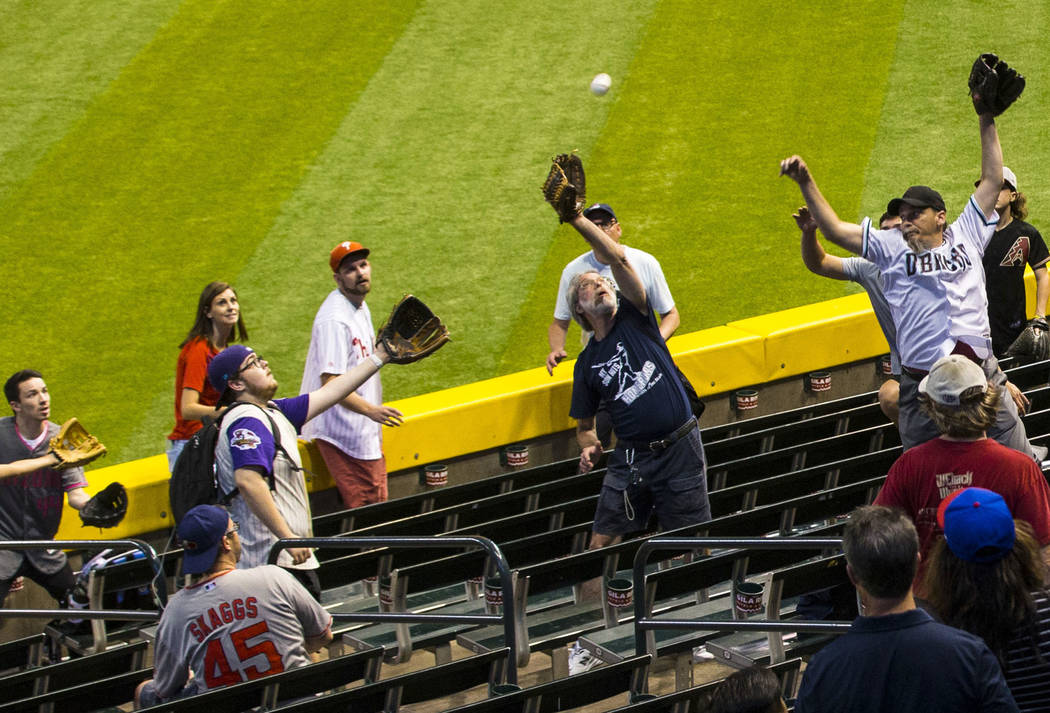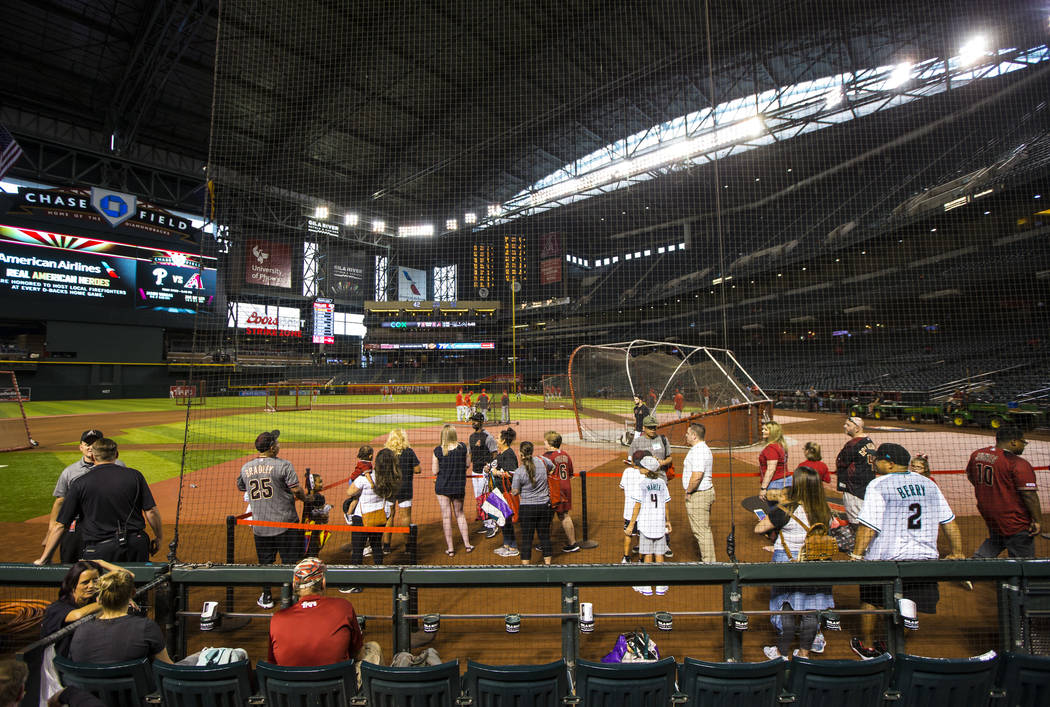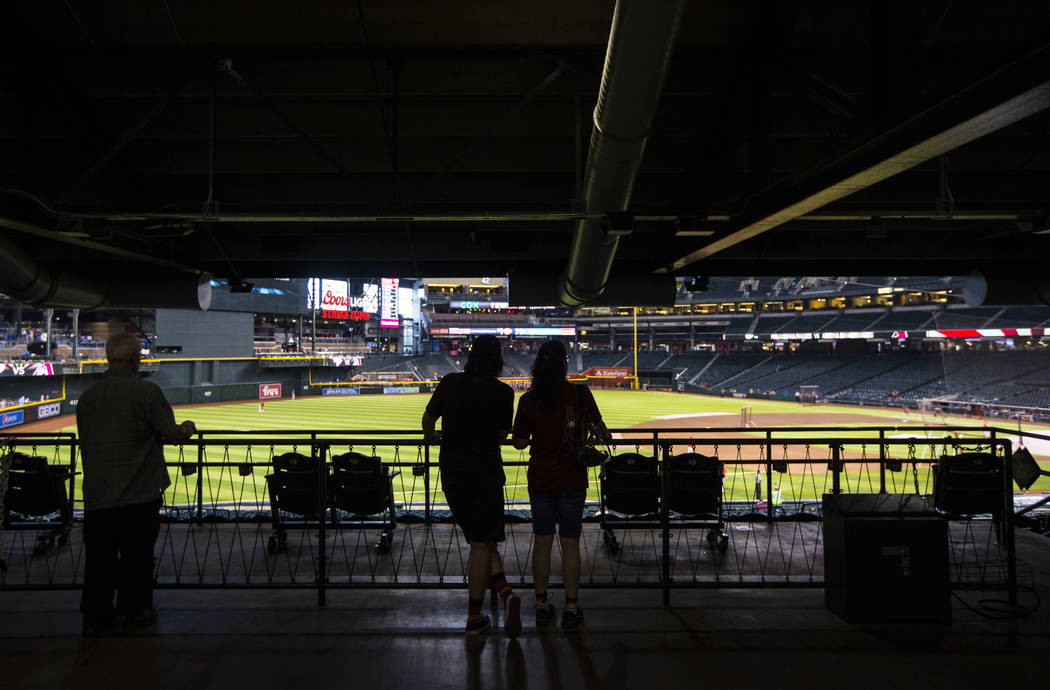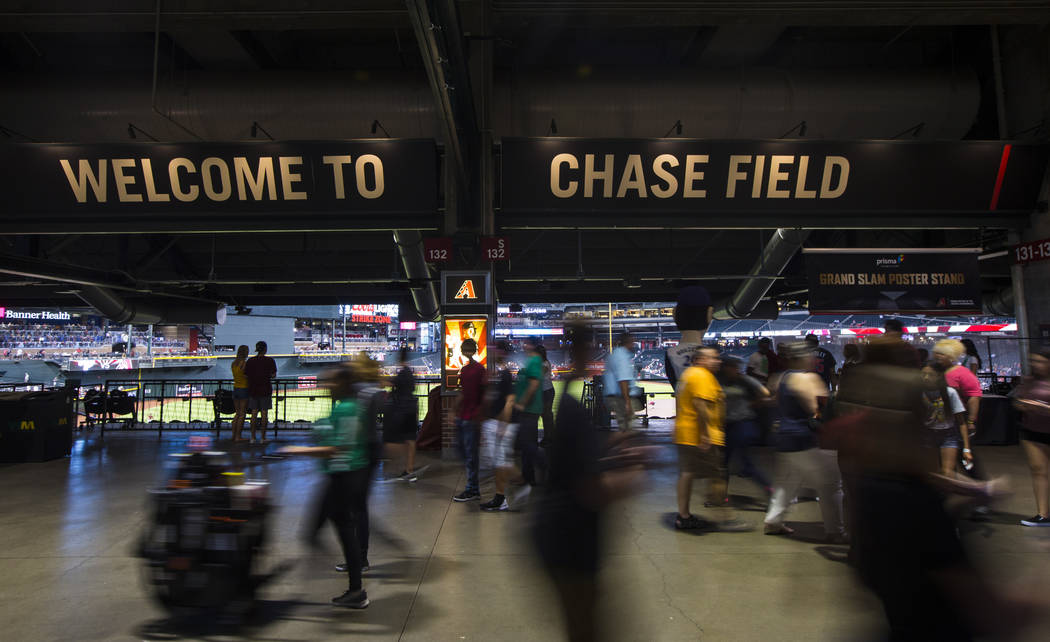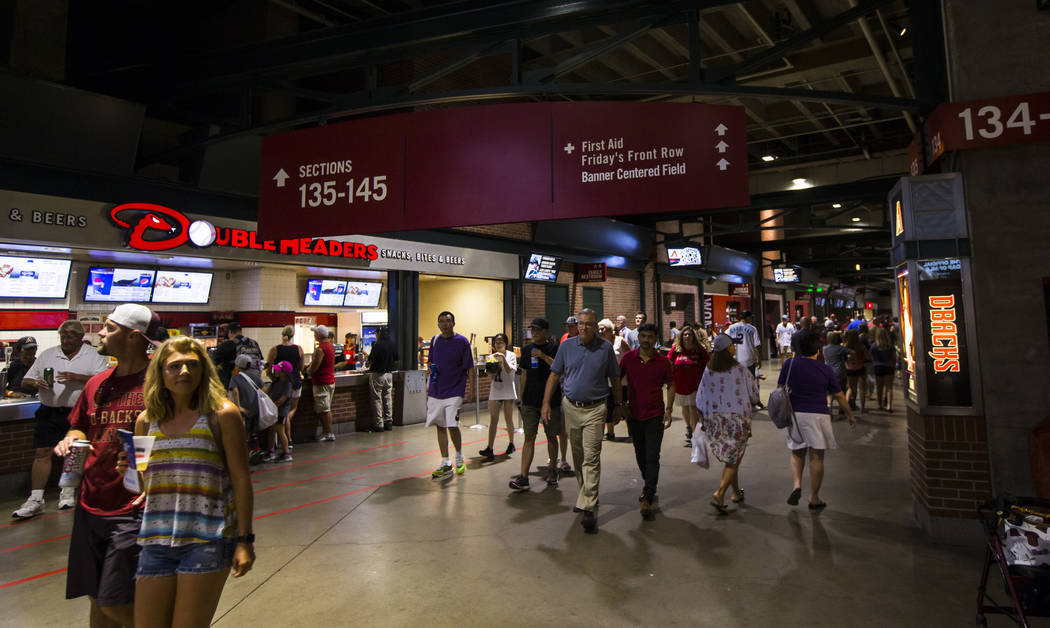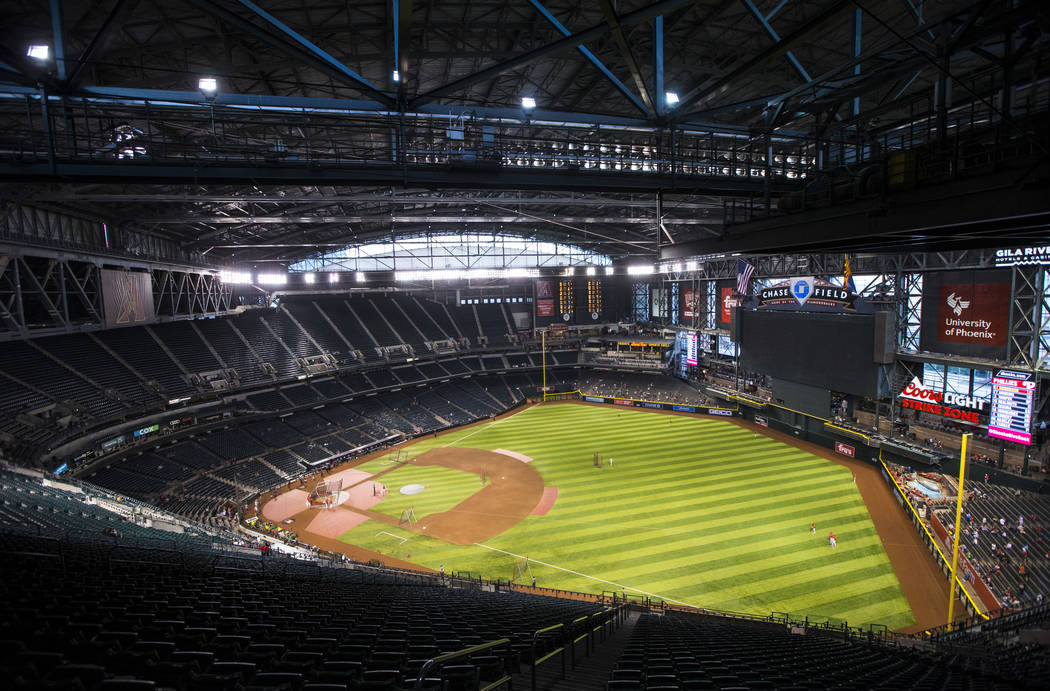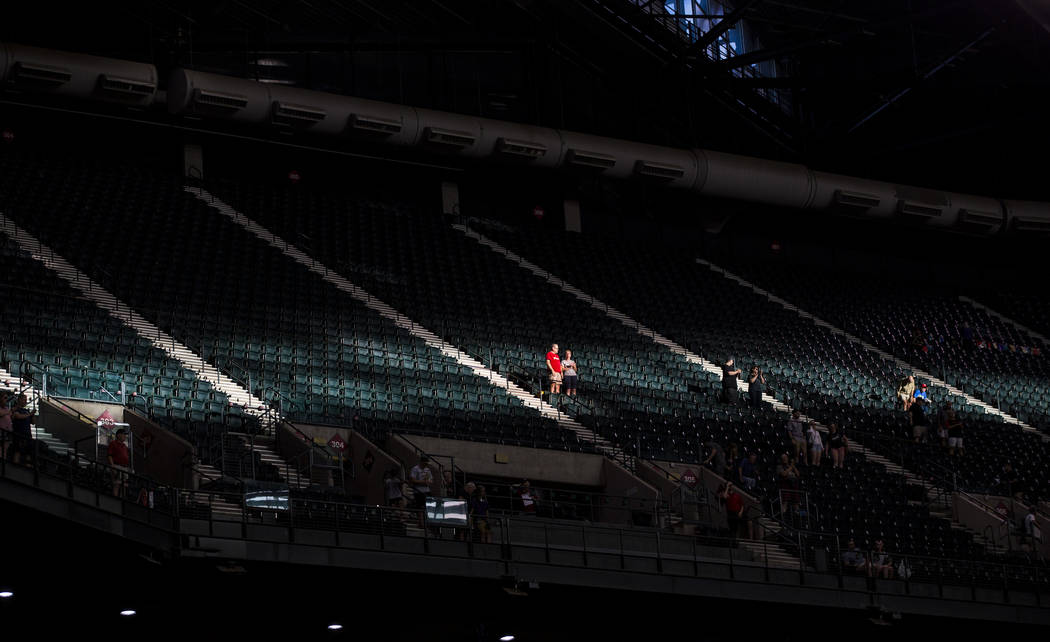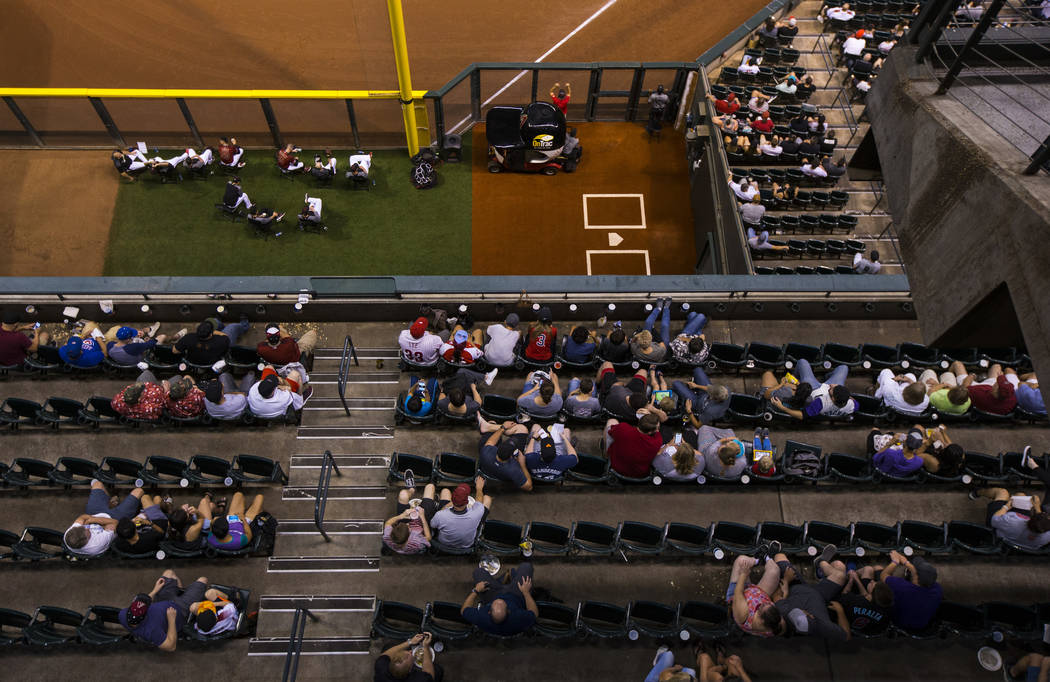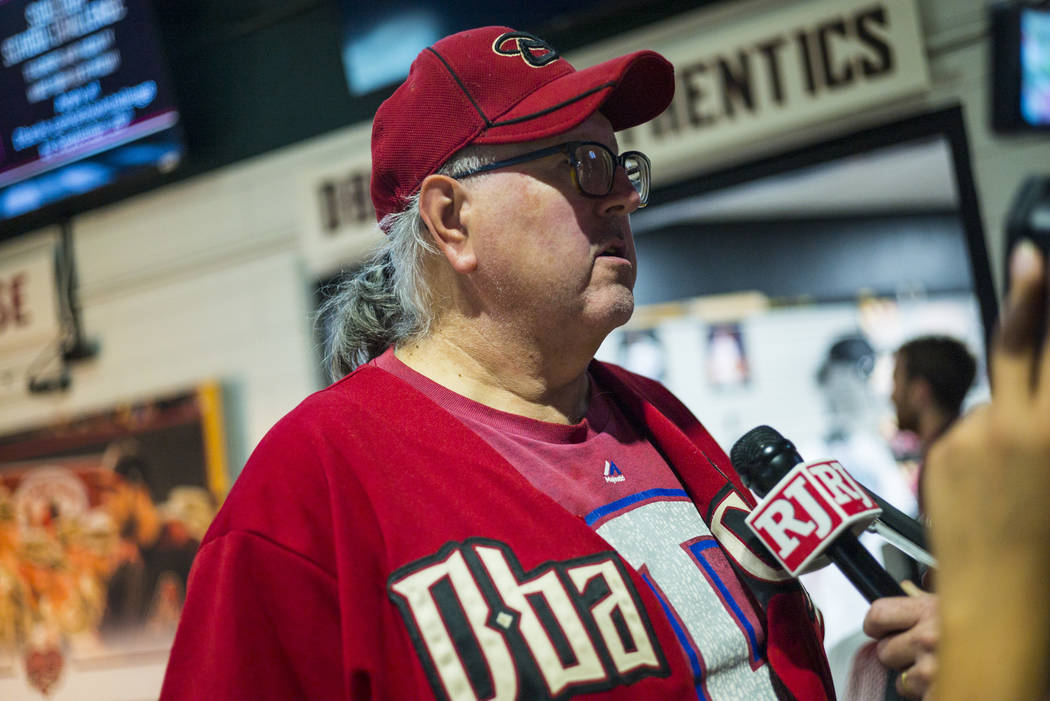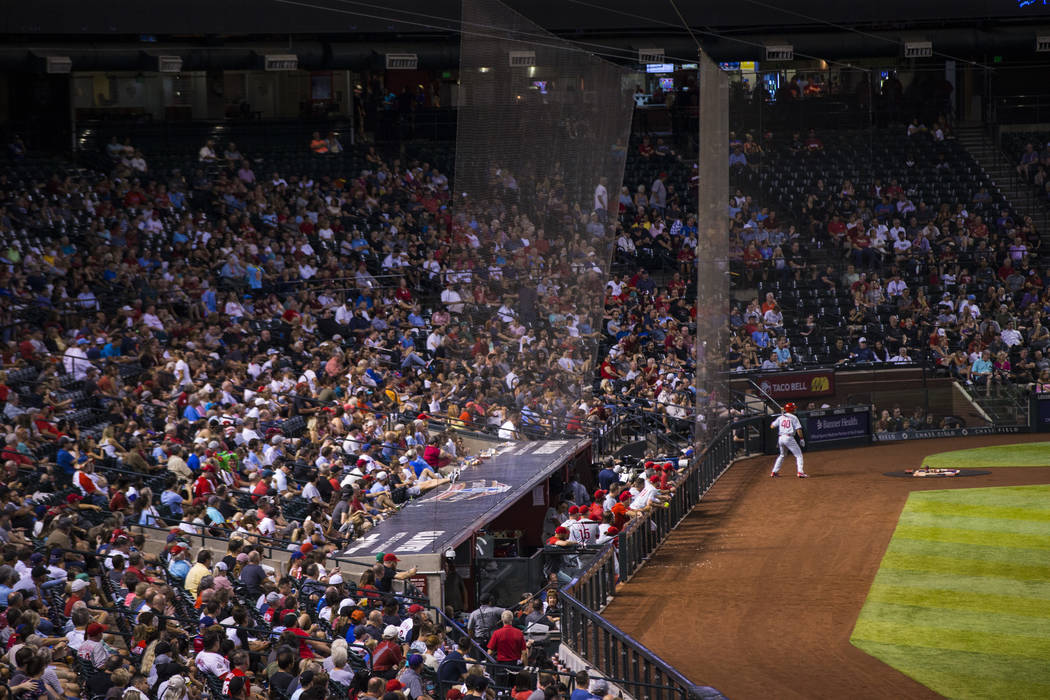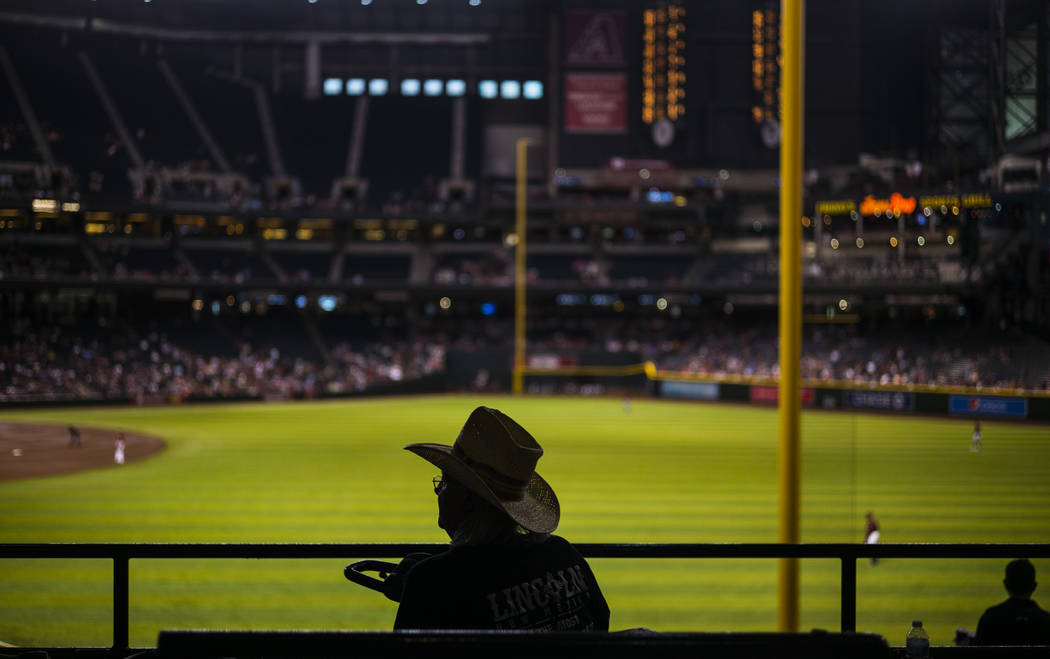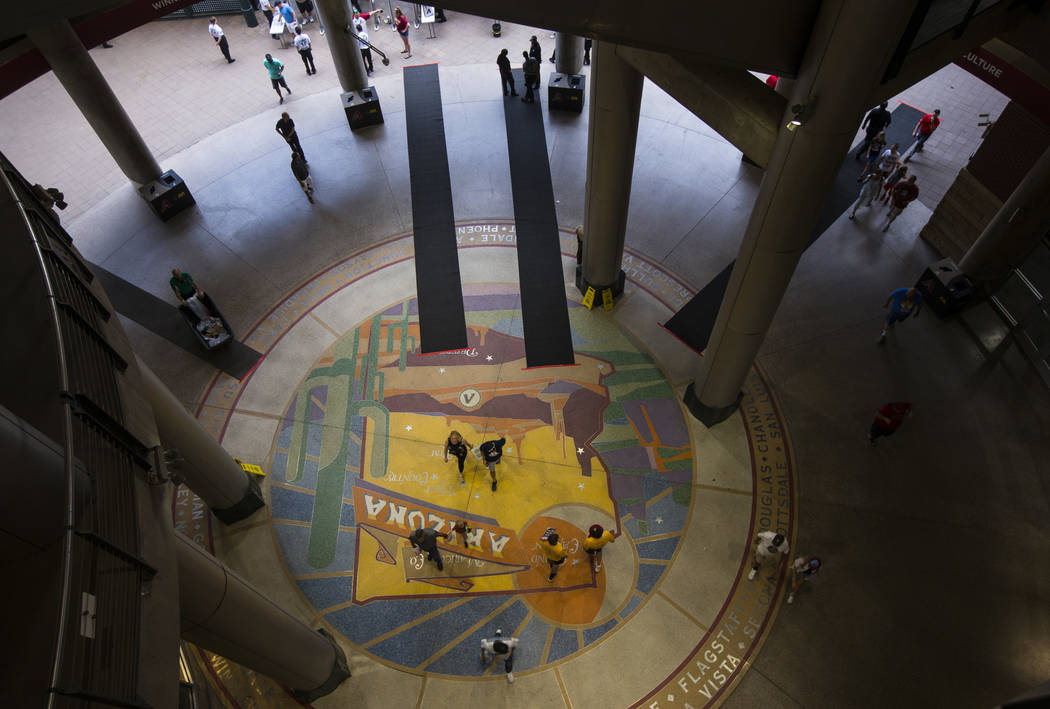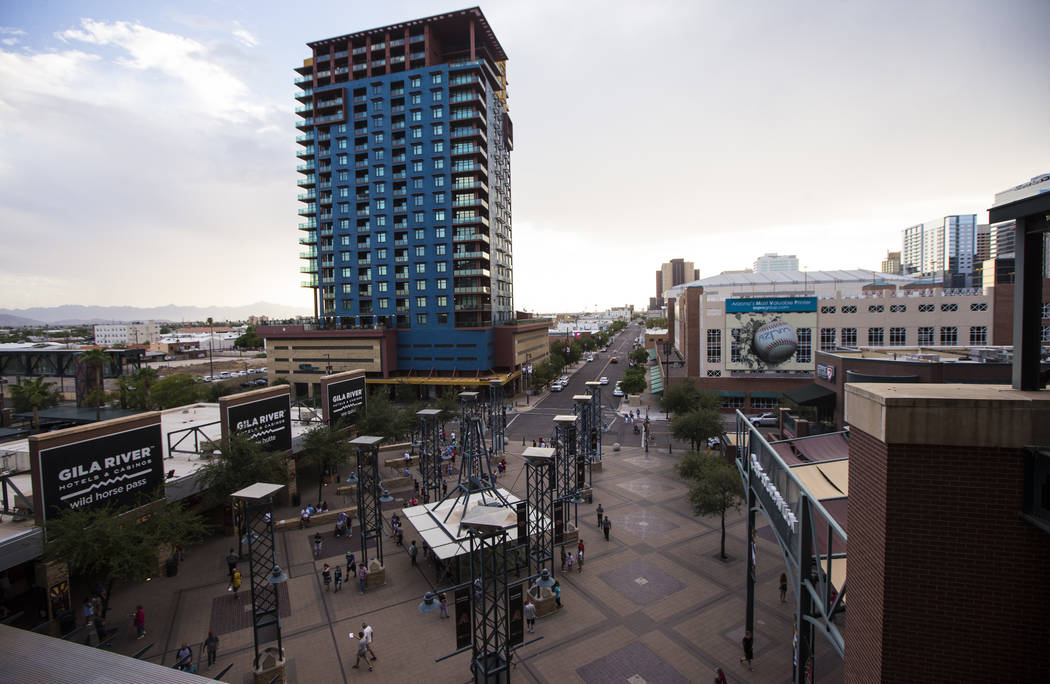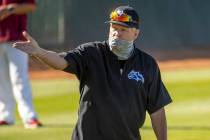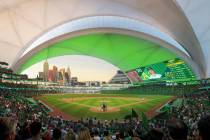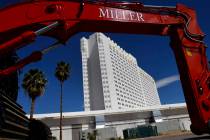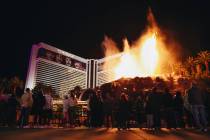Diamondbacks fans see no need for move to Nevada, new stadium
PHOENIX — It was a single to left, far more flare than line drive, and yet against the greatest of relief pitchers in Game 7 of the World Series.
Do you recall the mass euphoria when Luis Gonzalez swung at an one-strike offering from Mariano Rivera and promptly delivered the Arizona Diamondbacks into baseball’s history pages as the fastest expansion team to win a title?
Eighteen years later, the Diamondbacks are apparently looking to upgrade from the place of such distinct memory, the Review-Journal having reported that the city of Henderson engaged in discussions with the team last year about moving it to Southern Nevada and into a proposed $1 billion retractable roof ballpark.
It was October of 2001 when Chase Field, then named Bank One Ballpark, played host to what still ranks as the only major professional sports championship for Phoenix, a moment secured with a 3-2 victory against the mighty Yankees.
“I was sitting right here, in this seat, and we had a bunch of Yankees fans around us who finally surrendered, which was hysterical,” said Jackie Laird, who has purchased three season tickets annually to the Diamondbacks since their inception in 1998. “It was amazing. … I understand from baseball’s perspective that the (stadium) is not as up-to-date as others, but it’s still a great place. It’s a good central location with a lot of good, supportive fans. I think they can make it work.
“If they left (Phoenix), I would be sad and disappointed. You hope they’re more connected to this city than that.”
Which begs a question about Chase Field: How could a structure that is just 21 years old, the first stadium built in the United States with a retractable roof over a natural-grass playing surface, be so dated and decrepit, so broken down and unworthy of hosting major league professional sports?
Or, perhaps more importantly, is it?
History to this
Some background: Maricopa County in 1994 approved an increase in sales tax to fund its portion of the proposed stadium, which has a capacity of 48,519.
Locals weren’t allowed to vote on the issue, and one — a homeless man named Larry Naman — took his anger out about the tax by shooting and injuring a county supervisor as she left a board meeting.
Naman was found guilty of attempted first-degree murder in May of 1998, two months after the $364 million stadium opened its doors. He would serve 12 years in prison.
How things went from such a controversial and violent beginning to the apex of winning a World Series to a franchise reportedly now shopping itself to other markets just a little over two decades later depends on which side is speaking and whose emails you’re reading.
But those Diamondbacks fans still making their way from a summer inferno outside to a comfortable setting inside don’t seem to buy the theory theirs is a baseball home not worth preserving and improving.
They don’t view things as all that dire.
“I don’t think there needs to be a whole lot upgraded,” said 61-year-old Blair Weicker, a longtime resident of nearby Peoria who also attended the World Series in 2001. “Maybe a few minor things. I understand everyone wants new ballparks and more revenues rolling in, but if they ever left, it would really be a thorn in my side, especially with what we did with the tax. They should be happy with this stadium.”
And yet it’s obvious the Diamondbacks aren’t.
They sued Maricopa County in 2017, saying it should spend $187 million on repairs and upgrades to the stadium under the 30-year lease agreement signed when it was built.
But last year, the team dropped its suit with the agreement that it would assume operations and maintenance of the stadium if it could immediately begin looking for a new home and leave Chase Field for another location within the county after the 2022 season with no penalty.
If it left Arizona after 2022, it would face penalties of between $5 million and $25 million.
Much of what’s wrong with the stadium has been infrastructure issues. Bursting pipes that have led to flooding. Leaks in the cooling and air conditioning system. Grease fires in kitchens. Broken clocks and scoreboard lights. Whether the roof is too heavy to properly support the structure over time. Replacing what was brown and dying natural grass with state-of-the-art synthetic turf this season.
And then there is the cavernous eye strain: The place is just too dang big for baseball.
One way the game has answered declining attendance figures in the last decade is by shrinking stadiums, be it with new or existing models.
The Braves, for example, are in their third season at SunTrust Park (capacity, 41,000), which replaced Turner Field (53,000).
The Rangers next year will open Globe Life Field with a capacity of 40,000, leaving behind the 49,000-season Globe Life Park, which opened in 1994.
“We can’t find any evidence of (the Diamondbacks) spending any money since (dropping the lawsuit) to improve the stadium with one major exception in the artificial turf, which has held up well,” said Mark Faller, sports editor of the Arizona Republic since 2003. “The stadium was kind of outdated the minute the doors opened in 1998 because of (its size).
“Boston seems to have figured things out at Fenway Park. The Cubs seem to have figured things out at Wrigley Field. The Dodgers just recently announced stadium improvements they’re going to make. I think, in the end, the Diamondbacks will figure out a way to make things work in Chase Field.”
Way, way up inside it, where the air thickens as each ascending step draws heavier breaths and pools of sweat form across one’s brow, Jackie Laird is alone in Section 307, seat 6. She also owns Nos. 7 and 8.
It’s a Wednesday night and less than 40 minutes from first pitch against the Phillies.
She was keeping score that night in 2001, when a bloop single to left over a drawn-in Derek Jeter caused such mass euphoria, like she has every Diamondbacks game attended since the team christened its stadium against the Colorado Rockies in March of 1998.
She didn’t record the final run of Game 7 of the World Series until arriving home, coloring in that small-shaped diamond and carefully placing the page with all others and her ticket stubs in a box labeled “2001.”
She has a box for all 21 seasons.
“I understand that (the stadium) is too big,” Laird said. “Maybe they can do away with certain sections of seats to make it look more intimate. It’s still better than other places. I mean, look at Boston. That place is a rat trap.
“I just love baseball, and I will always support this team, no matter what.”
So, what now?
The Diamondbacks sit in the middle of the pack for attendance in 2019, having drawn an average of 26,124 through 55 home games.
Last season, they saw a 5 percent increase from the previous year and made $275 million in revenues. The stadium’s food items are consistently rated among baseball’s best.
It’s (extremely) hot and can be tough drawing fans off couches and into downtown during the summer, but the team hasn’t averaged 30,000 fans since 2008, suggesting any lagging turnstile numbers are more about on-field performance than off-field amenities.
So while things about the stadium don’t outwardly appear awful for a desert team that has made the playoffs just four times since winning its World Series and whose payroll (which ranks 21st out of 30 teams) has been sliced over the years to deny it much star power past a few names, those in charge obviously desire change.
One viable plan seems to be along the lines of renovating and retrofitting Chase Field to modern-day seating dimensions, simply following the lead of teams like the Rays, Indians and others.
But the Diamondbacks reportedly have explored building a smaller ballpark elsewhere in the county, mimicking the Atlanta model of a facility in a suburban district surrounded by retail and housing.
It is in nearby Scottsdale and on Native American land, site of the popular Salt River Fields at Talking Stick spring training facility, where such a proposed domed facility in the 38,000-seat range and mass development is most often talked about.
“I suppose,” Faller said, “if someone drove up with a truckload of cash for them and they got something done like that, it wouldn’t shock me. But there is no appetite at all for using public funds.”
In response to the Review-Journal report regarding Henderson, the team released a statement saying it had received interest from a number of cities, but had not pursued any because it didn’t have permission from Major League Baseball.
“Obviously, as we’ve gone through this, we’ve realized we want to stay in Arizona, we want it to work in Arizona, so we’re going to do everything we can looking here first,” team president and CEO Derrick Hall told the RJ. “It’s nice to know that there’s other markets out there that are interested, and I’m interested in hearing what they have to say one day.”
On Friday, an MLB spokesman confirmed to Forbes that the team had not sought or received permission to talk outside its current territory.
No team can relocate without 75 percent approval from owners.
“There is no chance baseball would allow a team in the country’s 12th largest media market to leave,” said Barry Bloom, a Phoenix-based sportswriter for MLB.com for 17 years before moving to Forbes. “It’s not happening. The National Hockey League doesn’t want to lose this market, and it has lost $35 million a year for the last 10 years with (the Coyotes). The Diamondbacks don’t lose money. They’re just looking for a better stadium deal. I would think Las Vegas has a much better chance at an expansion team in the future than a current one. It won’t be the Diamondbacks.
“(Leverage) would be the only reason for (talks with Henderson). Maybe the idea was that when the news leaked, people here would panic. But nobody panicked and nobody is supporting using public dollars for a new stadium. The team is not a high priority. It’s just one of four (major league professional sports), two major colleges in the state, NASCAR, golf, 11 spring training facilities. … There are plenty of sports to support.
“So whatever happens here, the Diamondbacks are going to have to handle it out of their own pocket.”
Contact columnist Ed Graney at egraney@reviewjournal.com or 702-383-4618. He can be heard on “The Press Box,” ESPN Radio 100.9 FM and 1100 AM, from 7 a.m. to 10 a.m. Monday through Friday. Follow @edgraney on Twitter.
CHASE FIELD
Site: Downtown Phoenix
Main tenant: Arizona Diamondbacks
Opened: 1998
Cost: $364 million
Previous names: Bank One Ballpark (1998-2005).
— First stadium built in the United States with a retractable roof over a natural-grass playing surface.
— Grass was replaced by synthetic turf in 2019.
— Roof is opened or closed depending on game-time temperature. The process takes 4½ minutes. Temperature inside is 78 degrees when gates open.



